Aconcagua - Part 2
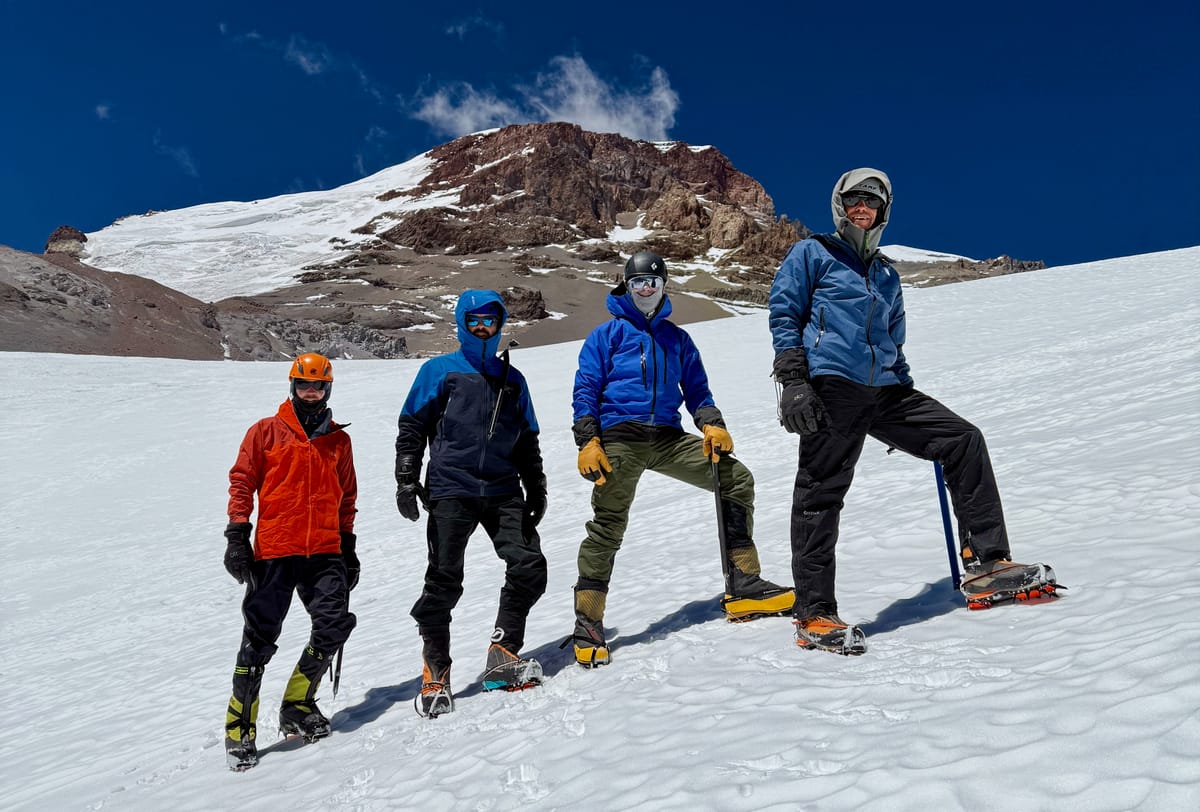
Day 4 - Rest Day at Plaza Argentina (Base Camp)
- Altitude = 13,799'
- Net Gain = 0' (Rest Day)
After staying at small campsites in the Vacas Valley, our arrival in Plaza Argentina felt like entering a vibrant town. The camp was filled with yellow semi-permanent domes situated along meandering paths, and there was even a large dome with a full service bar in it.
The four cooks working for AMG/Alpine Ascents at Plaza Argentina were phenomenal — not only because of their cooking but also their warmth and enthusiasm. You could tell they really enjoyed life on the mountain.
Breakfasts at Plaza Argentina included scrambled eggs, toast, french toast, pancetta, and ham quesadillas. Lunches and dinners typically began with soup, followed by variety of dishes including steak, pasta, or an Argentine-style shepherd's pie. These meals provided warmth, energy, and boosted morale.
Day 5 - Gear carry from Plaza Argentina to Camp 1
Beginning Altitude = 13,799'
Camp 1 Altitude = 16,443'
Ending Altitude = 13,799'
Elevation Gain = 2,644'
Net Elevation Gain = 0'
On our fifth day, we set out for a gear carry from Plaza Argentina to Camp 1. We'd all trained carrying heavy packs prior to this trip, but most of us hadn't done it at elevation — this was our real first fitness test of the expedition.
The Vacas Valley Route has limited porter support, and we were expected to carry all of our personal gear plus 10-16 kilograms of team food, fuel, stoves, etc. for the upper mountain. Climbers can, however, hire porters starting at Plaza Argentina to help lighten the load.
For this carry, I had my expedition parka, crampons, ice axe, and insulated pants along with team supplies consisting of coffee, pasta, and a couple bottles of fuel for the stoves. In total, it was probably around 40 lbs. I'd bring the remainder of my gear up with me once we moved to Camp 1.
After the usual breakfast at 9am, we took off for Camp 1, which took about four hours of hiking. This was when we first encountered Penitentes, thin snow formations that jutted skyward. They were often packed so closely together you could barely thread a single leg between them. In the morning the ice was firm enough that you could use the penitentes as handrails for balance, but later in the day they could collapse under your weight. We had to tread carefully, as our guide noted climbers occasionally twist knees and break ribs in these fields.
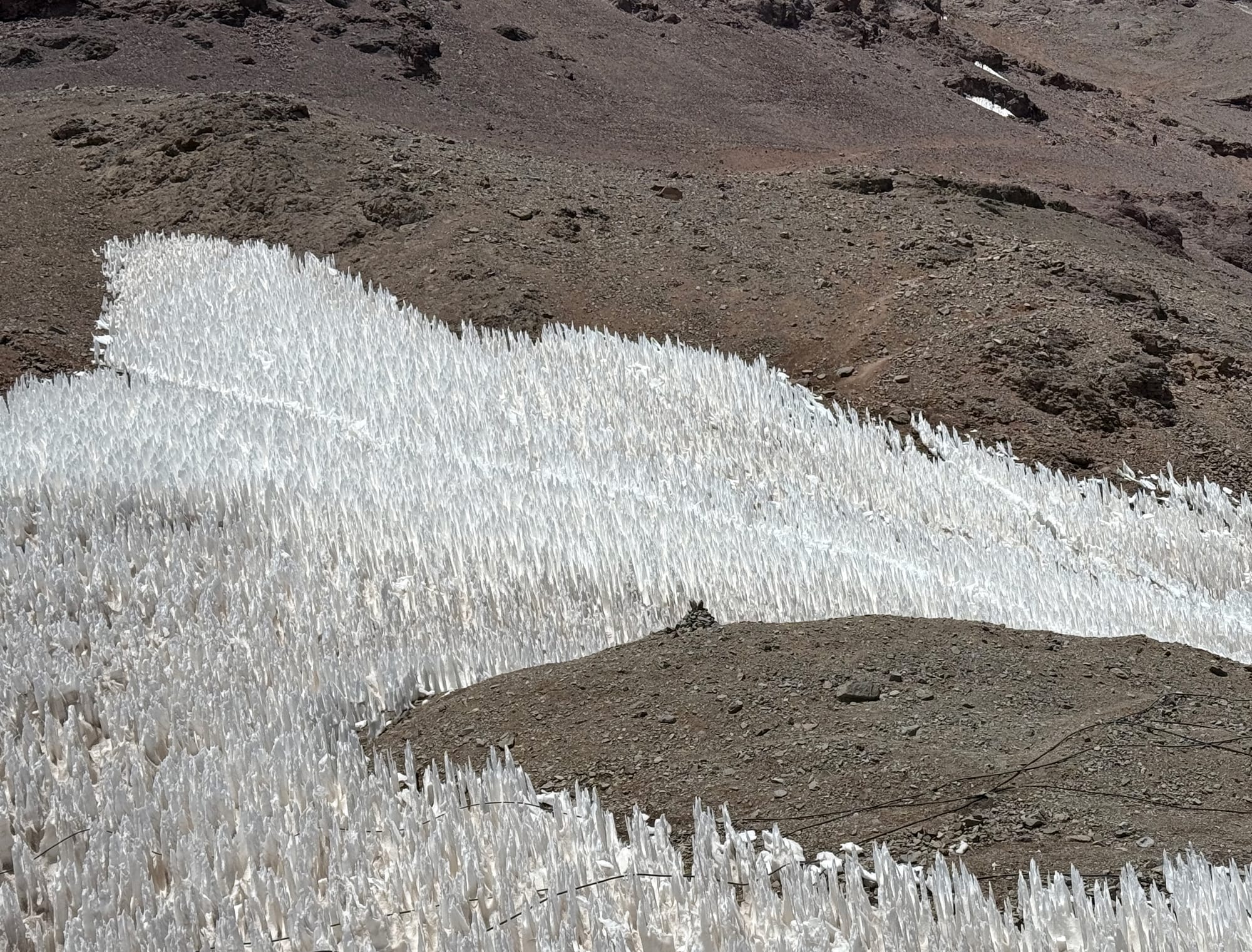
The push up to Camp 1 was difficult, but for the first time on the expedition, I felt genuinely healthy and strong, having finally gotten over my cold. It was such a relief to be on the move and actually look forward to climbing.
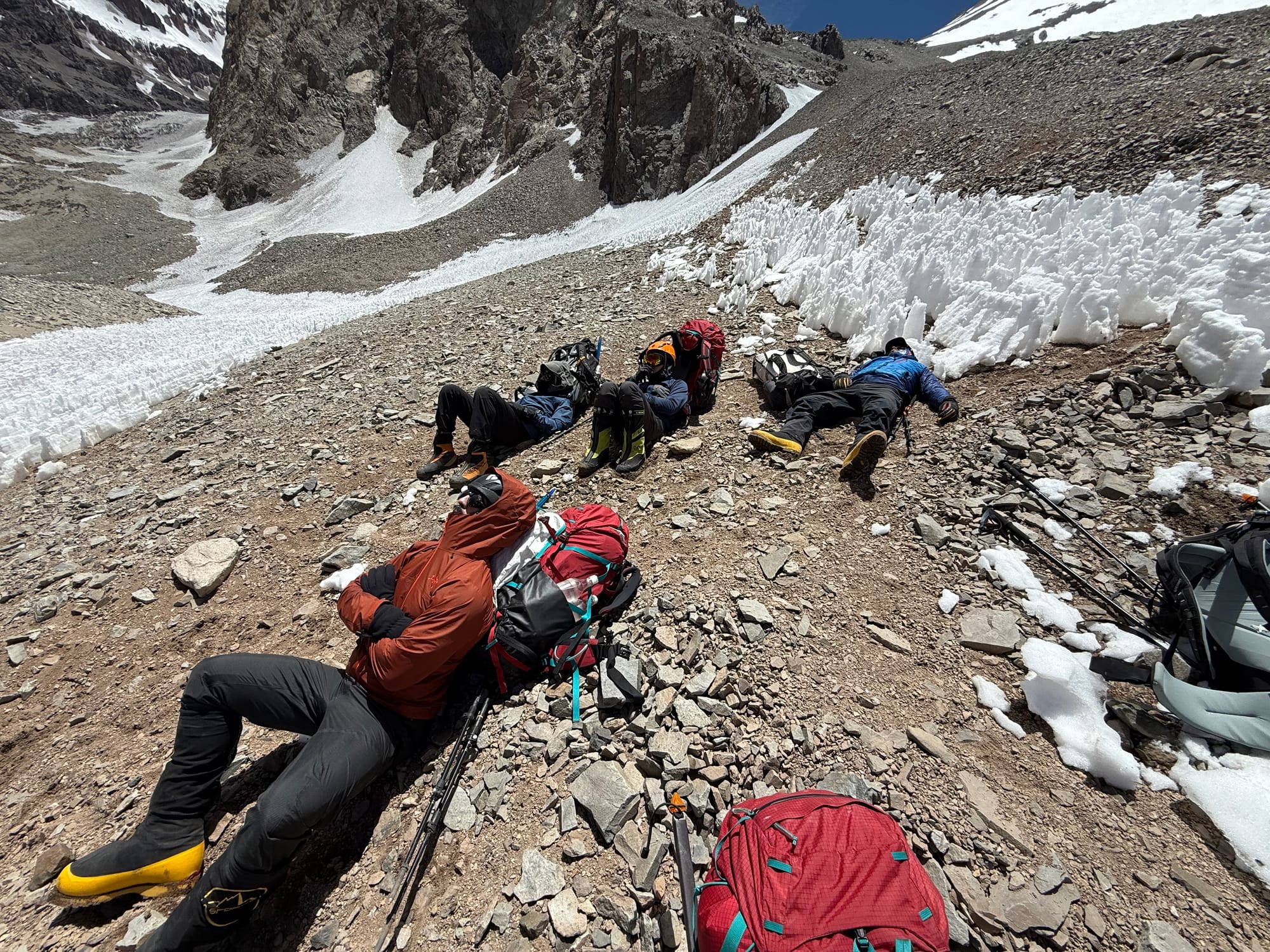
As we approached Camp 1, we were blasted by winds that nearly knocked us off our feet. Crouching low to the ground, we had to wait for the gusts to die down before pushing up and over the final ridge at the edge of camp.
After unloading our gear, we were rewarded with about twenty or thirty minutes of rest before strapping on our now empty packs and trudging back down to Plaza Argentina.
Day 6 - Rest Day at Plaza Argentina
Depending on your point of view, the rest/acclimatization days involved in high altitude mountaineering are either a blessing or a curse. Although some of the team struggled with the monotony of dome life and endless pacing around camp, I actually enjoyed having time to just relax and read.
Team conversations veered in many directions on rest days. A non-exhaustive list of team discussion topics included real estate development; the great financial crisis and collateralized debt obligations; the differences between mortgages in Canada and the U.S.; Janet Yellen as Treasury Secretary; glioblastoma; Jerome Powell and deciphering fed minutes; the personality differences between billionaires and millionaires (billionaires are more chill according to a guy on the team who has worked for some); how high altitude pulmonary edema (HAPE) works; how airplane oxygen masks don't work; why we get sleep apnea at altitude; the pros and cons of Canada's healthcare system; immigration; the pros and cons of Donald Trump; whether to be cremated; etc. We had a lot of downtime in these domes.
On our sixth day, we were required to get a check up from Plaza Argentina's full time doctor. There was a lot of nervous chatter, as we each waited to enter the medical dome. I half expected to get sent down the mountain due to my persistent cough but was fortunately cleared to continue.
Day 7 - Rest Day 2 at Plaza Argentina
I can't exactly remember why, but we wound up having a second rest day in Plaza Argentina. I believe it was primarily weather related.
Regardless, I was perfectly happy to hang out and read.
Day 8 - Move from Plaza Argentina to Camp 1
Before leaving Plaza Argentina, we all separated out the gear we wouldn't need higher on the mountain. On the Vacas Valley route, you traverse around the mountain and descend on the other side towards Plaza de Mulas, the main Base Camp at Aconcagua. As a result, teams hire Arrieros to transport unneeded gear around the mountain to meet us on our descent at Plaza de Mulas.
I decided to ditch my Sony mirrorless camera and retrieve it at Plaza de Mulas. In retrospect, I shouldn't have brought it at all. I learned on this trip that if something is a hassle to use, you're not going to use it. It was much easier to just pull out my phone, which quickly became my primary camera.
The move to Camp 1 was tough. We took a more direct route than on our carry day, but it felt like the elevation gain was a lot steeper.
Day 9 - Rest Day at Camp 1
After moving to Camp 1, we took another rest day. I tried to get out and stretch my legs as much as possible, but we spent most of the day in an insulated dome tent, which was pretty comfortable.
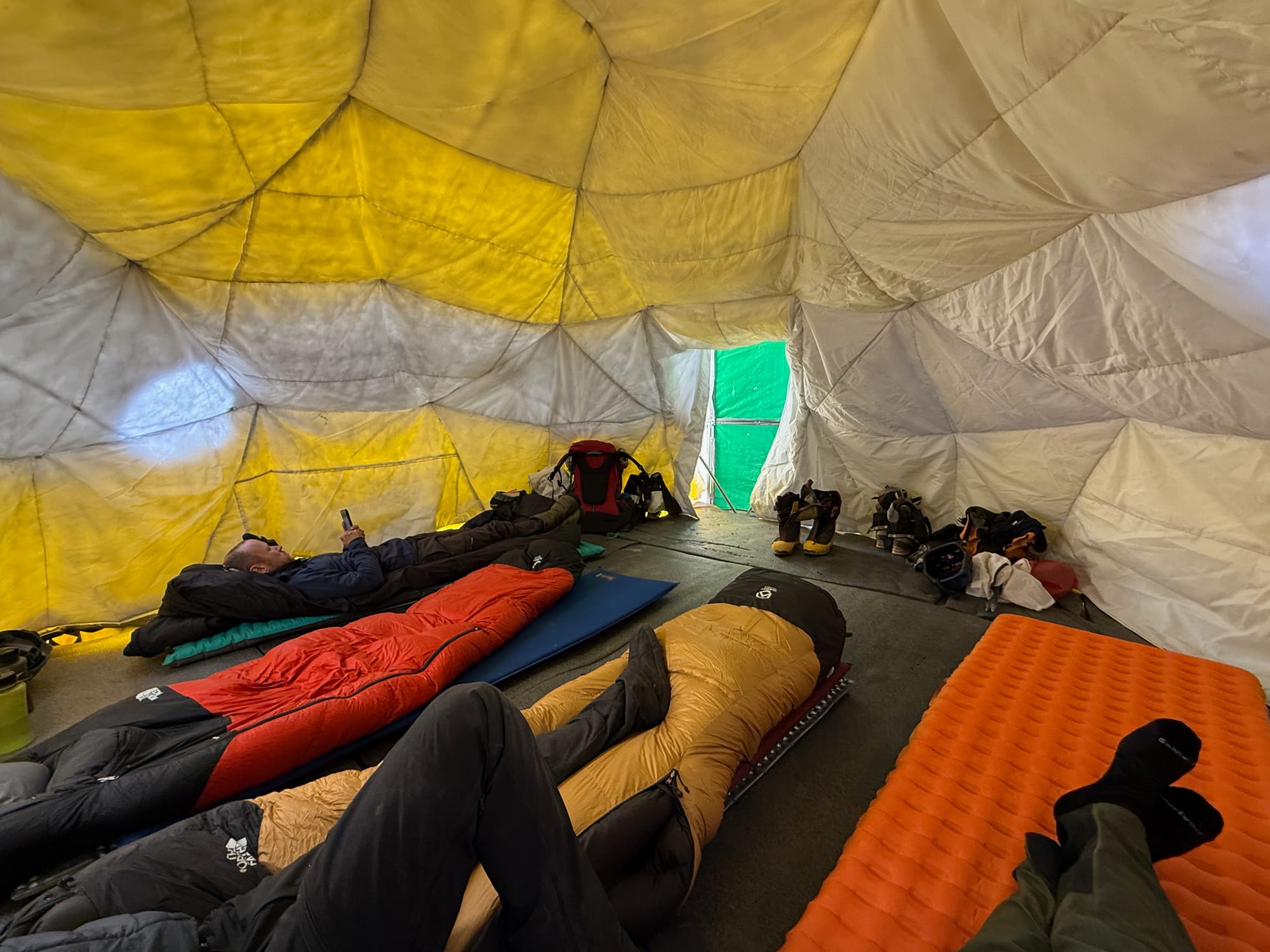
Day 1o - Move from Camp 1 to Camp 2 (Guanacos)
The hike from Camp 1 to Camp 2 (Guanacos) took about four hours, including breaks and lunch. It began with a steep ascent, followed by a traverse around the mountain.
At this point in the trip, the team decided to stop doing gear carries and just move our gear and supplies all at once. This obviously made the hikes more difficult, but it was nice not having to retread the entire mountain. With water, food, fuel, and gear, my pack clocked in at 60 lbs for the climb up to Camp 2.
Camp 2 offered spectacular views and is probably the most beautiful camp on the entire route.
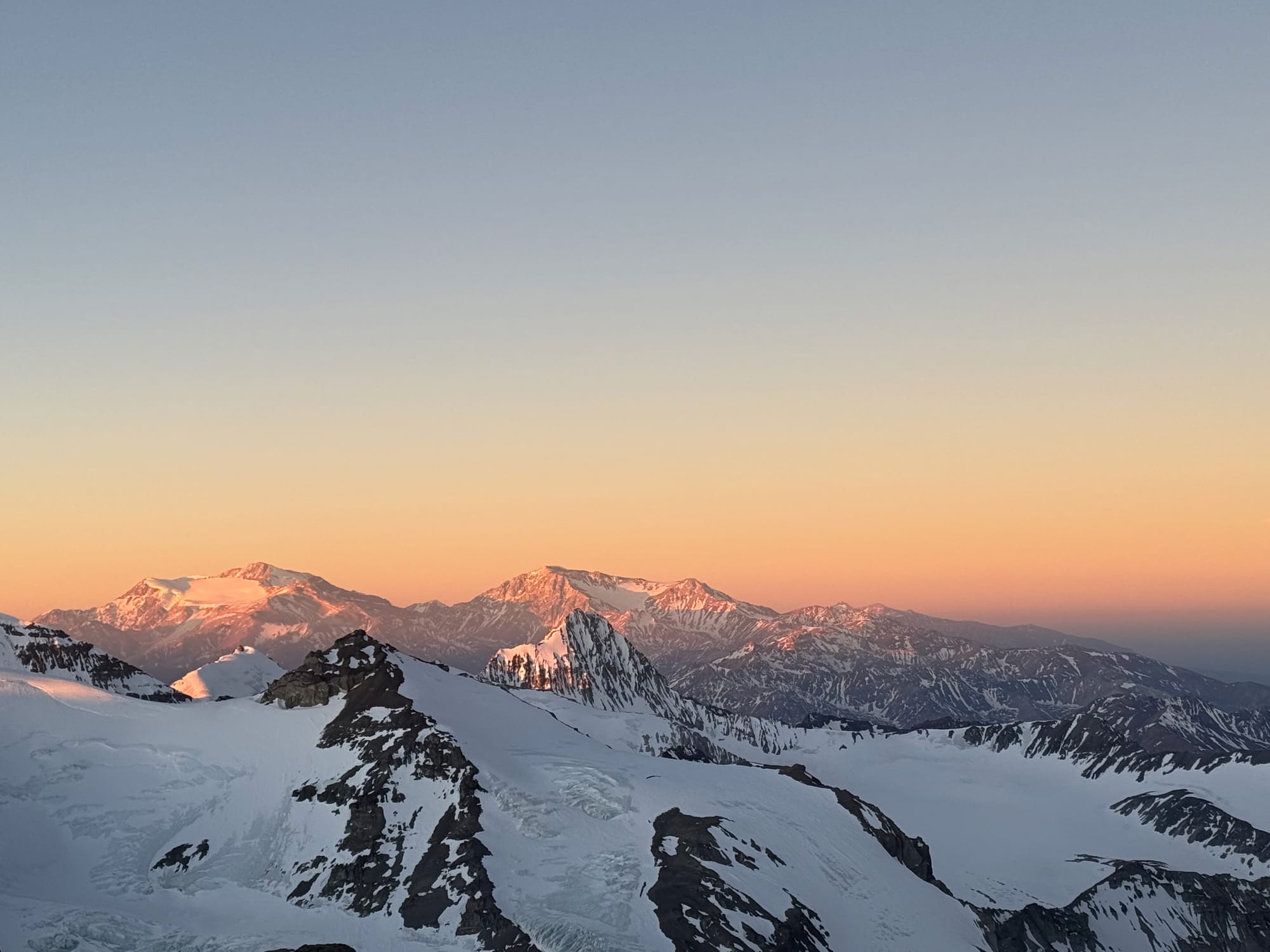
I accidentally ended the workout during lunch...
Day 11 - Rest Day at Camp 2 (Guanacos)
Camp 2 on the Vacas Valley Route is also confusingly referred to as Camp 3 Guanacos or Guanacos Tres, because it serves as Camp 3 on a now seldom used route.
The wind barely stopped the entire time we were at Camp 2, and the few moments of calm felt really erie. Within moments, however, we'd hear what sounded like a jet engine in the distance and seconds later the blast would hit our dome.
Day 12 - Rest day at Camp 2 (Guanacos)
One of our guides took us out for crampon and self arrest practice while at Camp 2 (photo at the top). It was a nice break from just sitting around and a good refresher in case we'd need to use our crampons and ice axes further up the mountain.
Aside from crampon practice, collecting water was our only other activity.
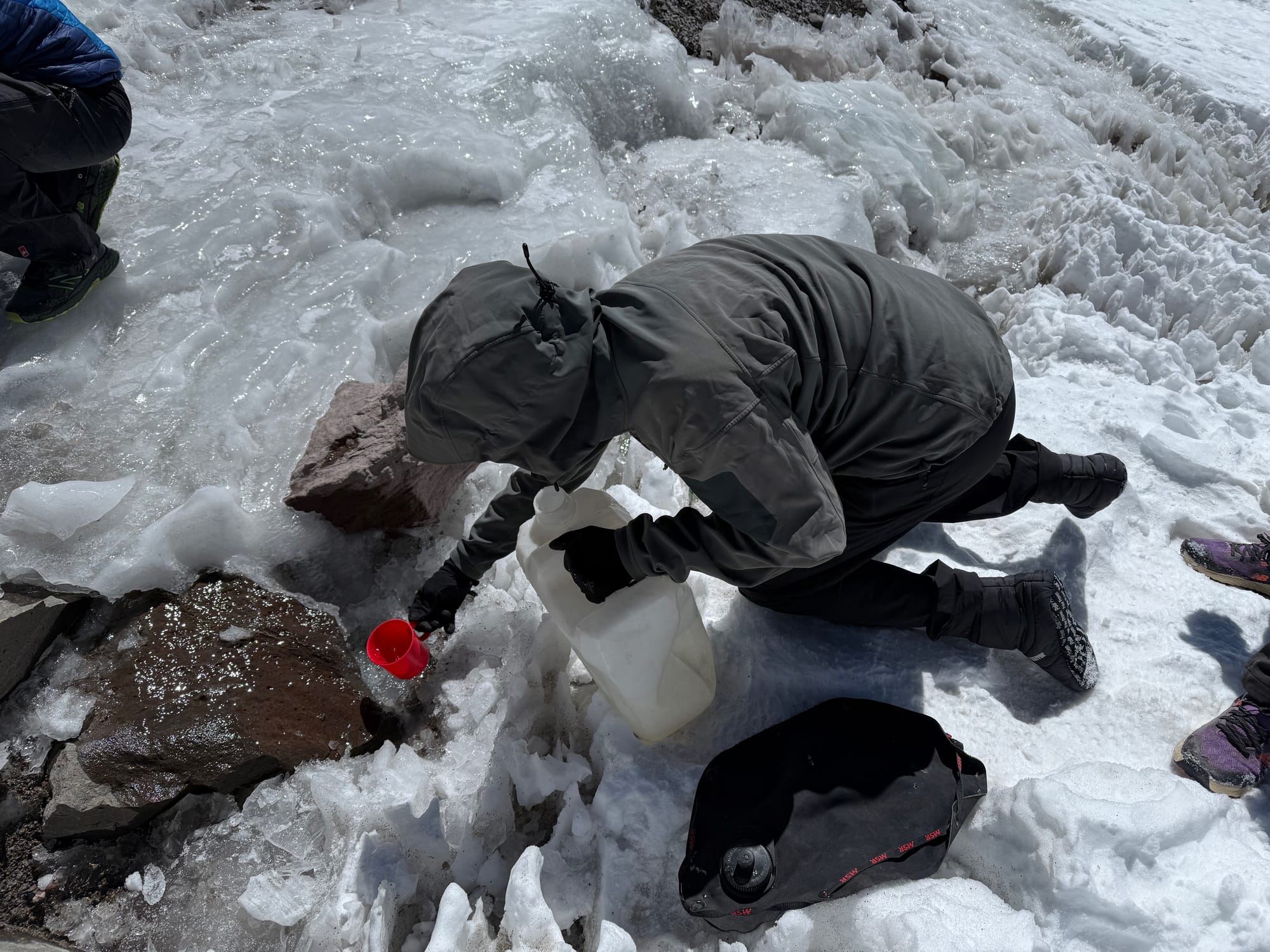
A side effect of taking Diamox is that it is a diuretic, so if you're on it, you wind up having to go to the bathroom at night. Still, those nighttime bathroom trips can offer great chances to see and photograph the night sky.
I took the photos below around 2:00am using a 10-second exposure on my iPhone. Even with the naked eye, however, the moonlight below was strong enough to cast deep shadows throughout the range.
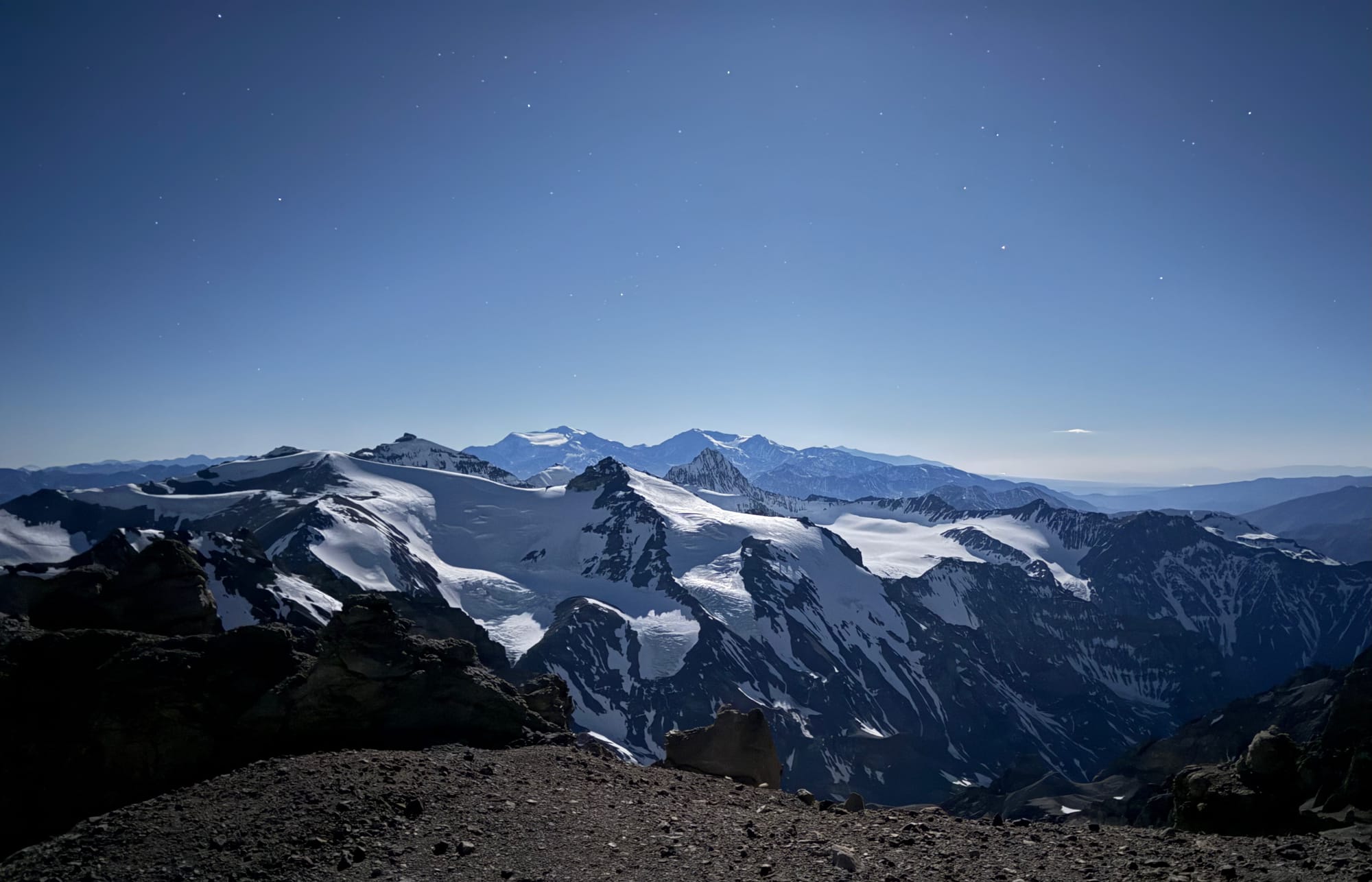
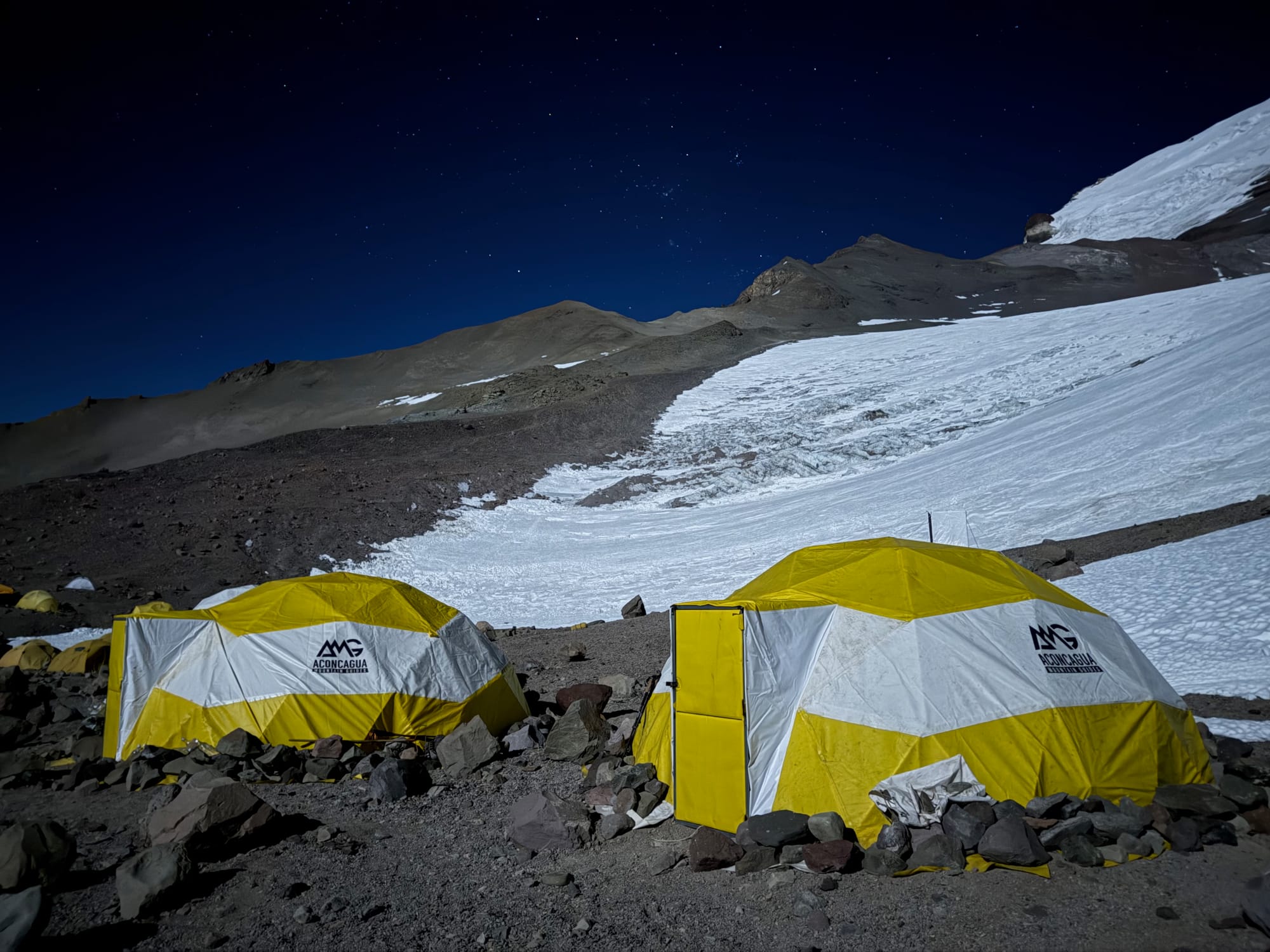
More night photography taken on my iPhone at Camp 2 (Guanacos)
Day 13 - Move from Camp 2 (Guanacos) to Camp 3 (Cholera)
- Starting Altitude = 17,991'
- Ending Altitude = 19,638'
- Net Gain = 1,647'
- Distance = 1.9 miles
As we packed up to leave for Camp 3, helicopters started dropping off solar panels and battery packs, which among other things, would power the Starlink receivers that provide internet at each camp.
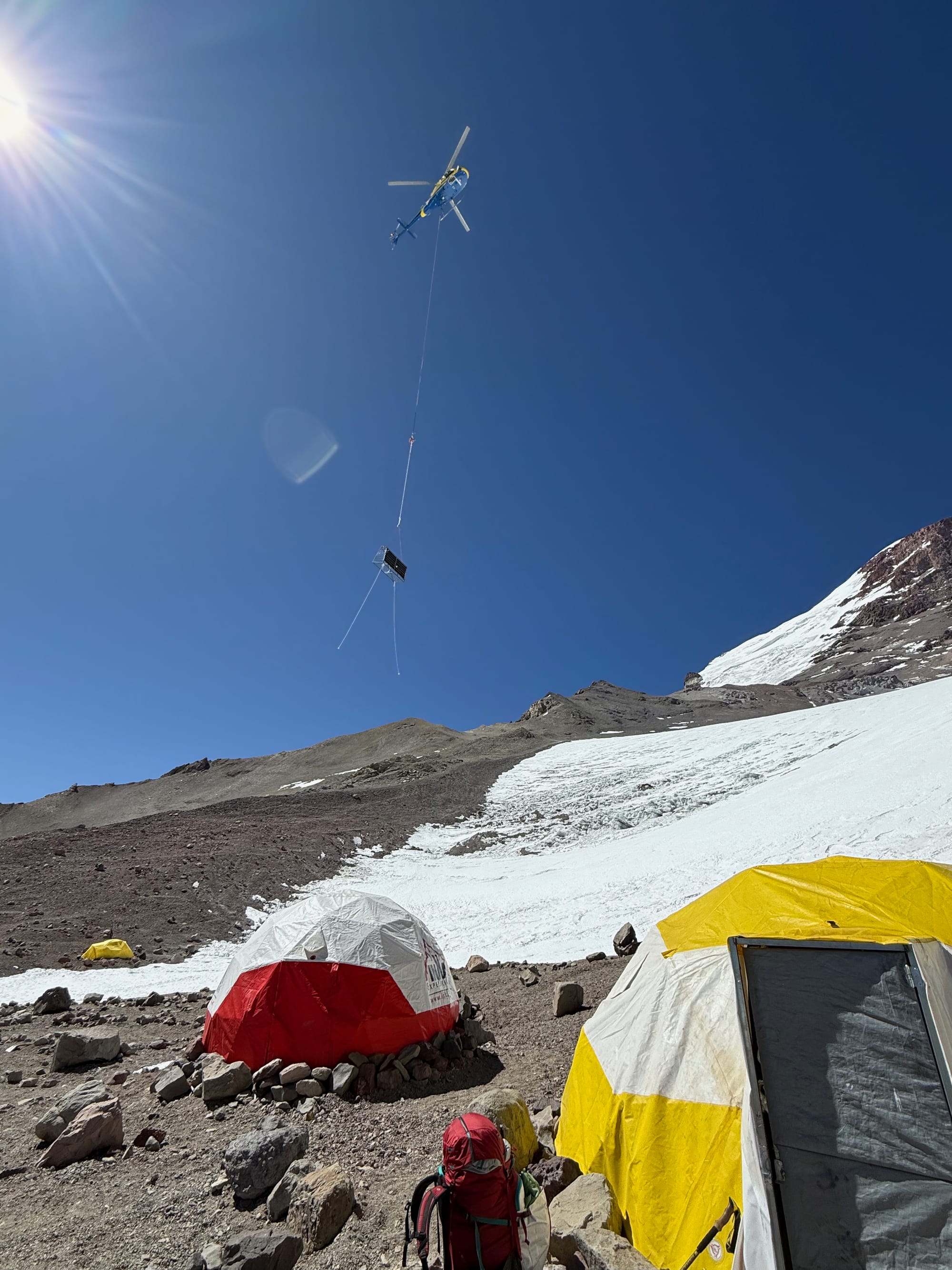
As with our move to Camp 2, we opted to carry all our gear at once to Camp 3. My pack weighed in at 53 lbs for this climb.
Arriving at Camp 3 — perched at 19,638' — felt like a major milestone. This camp was higher than the summits of Kilimanjaro and Cotopaxi, and we were now within striking distance of the highest point in the Americas.
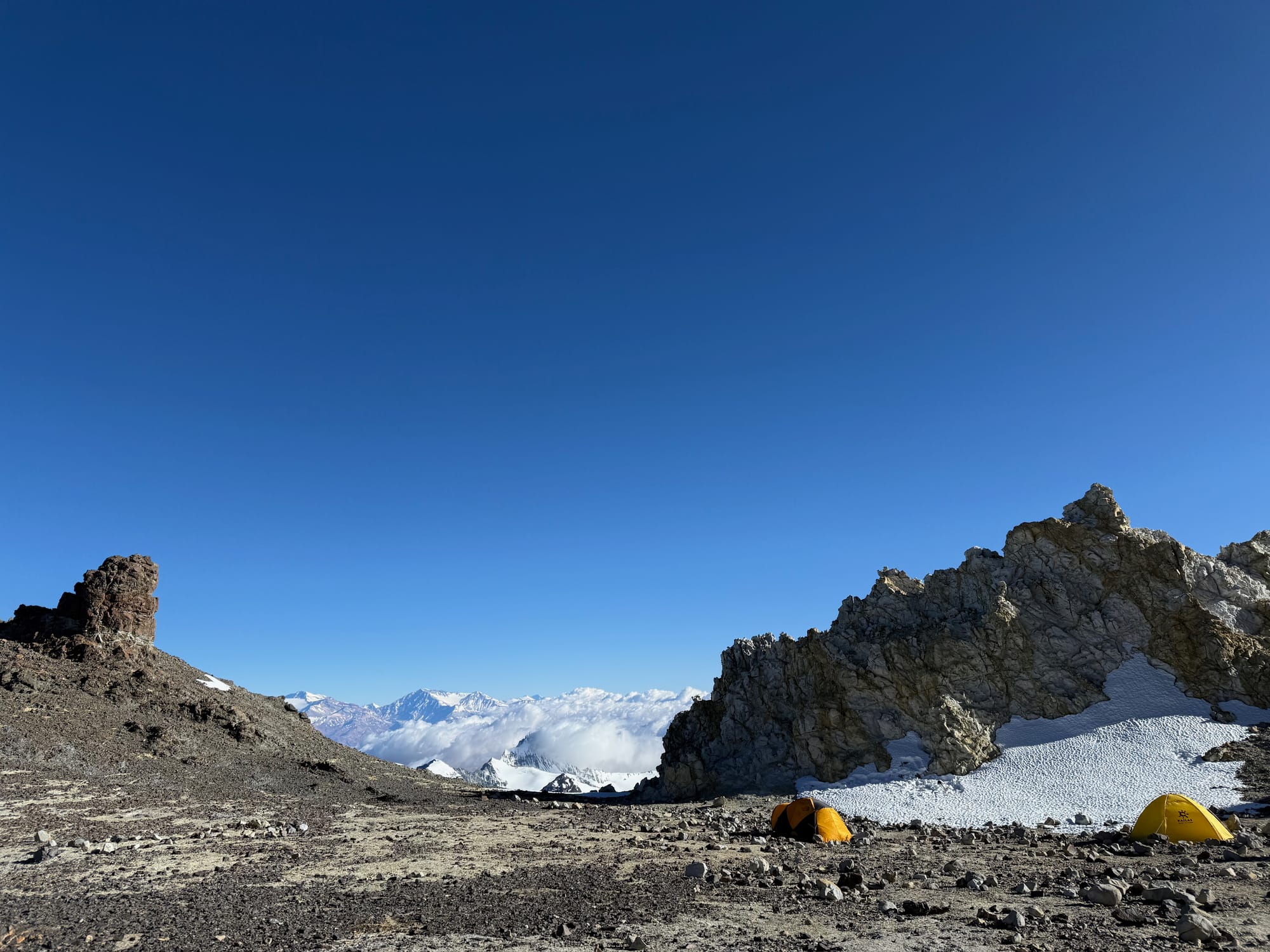
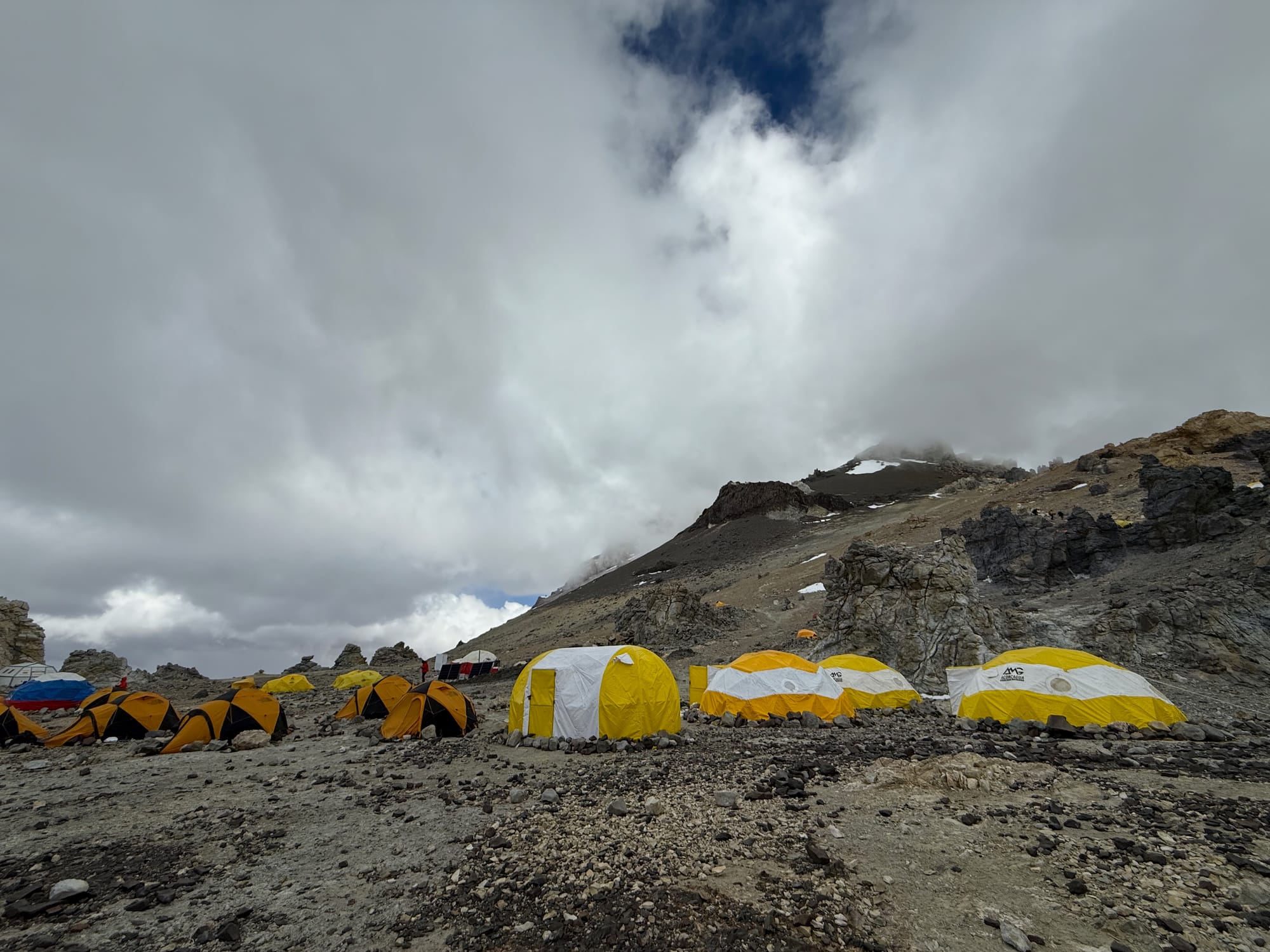
The weather shifted dramatically at Camp 3 (Cholera)